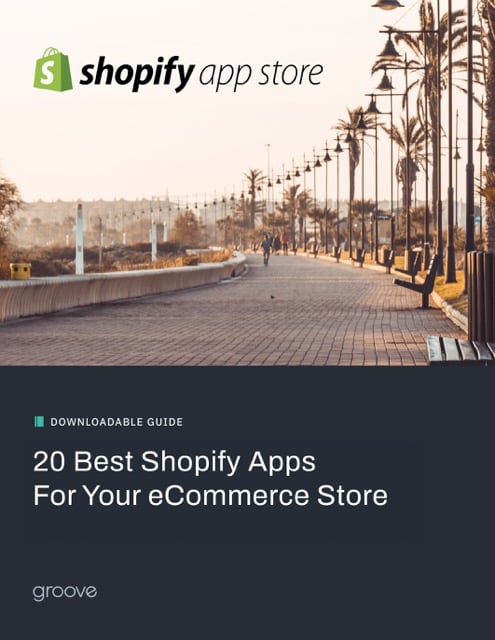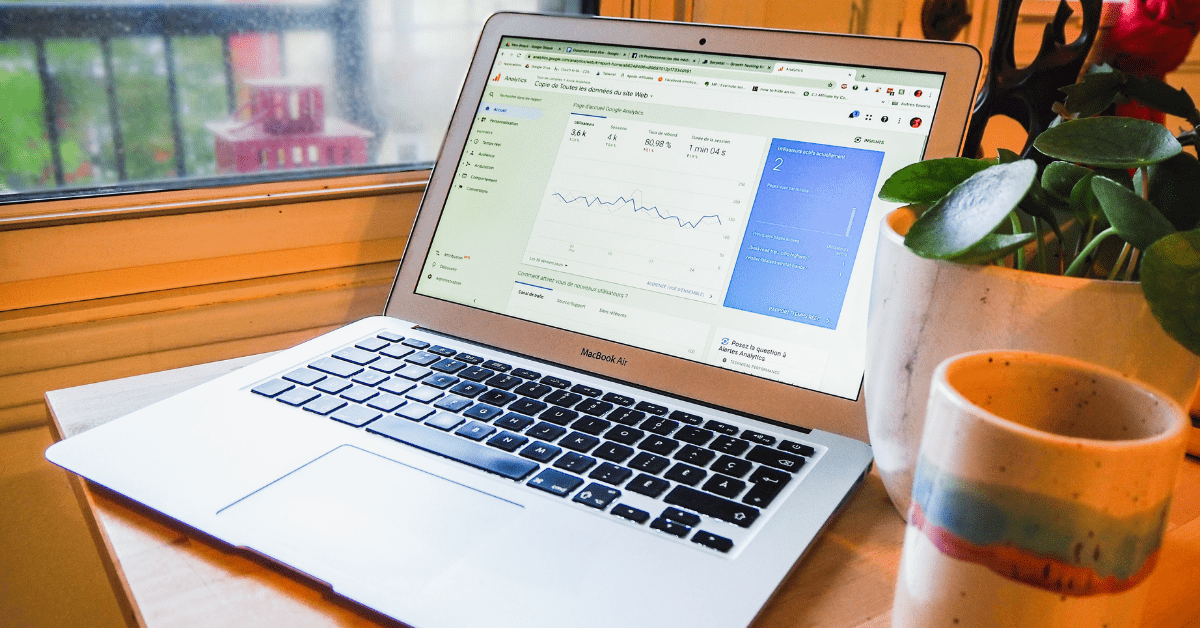Advertising on various platforms is a great way for businesses to increase visibility and brand awareness. Whether your goal is to increase sales or drive leads, an optimized B2B advertising strategy will help to drive engagement and website traffic. In this blog, we're sharing how you can leverage Google, Facebook and Instagram ads to promote your B2B eCommerce store.
B2B Advertising: What Is It?
B2B advertising refers to any paid media and marketing strategies that are geared toward businesses rather than to individual consumers. Groove Commerce, for example, utilizes B2B advertising and marketing to attract and engage our target audience − businesses.
Whether you sell services (like Groove does) or products to other businesses, take advantage of these B2B advertising platforms if they fit within your budget.
B2B Advertising With Google
Google is one of the best advertising platforms to increase visibility, website traffic and conversions. Control how much you want to spend, target your ads to specific audiences, easily manage campaigns and measure the success of your advertising efforts all with Google. We encourage eCommerce businesses to implement the following three ad formats to drive serious results.
Google Shopping Ads
Take advantage of Google Shopping ads to reach your customers and attract your audience no matter what stage they're at in the buyer's journey. Google allows more than one ad per company to appear on a results page, providing for a broader presence and increase in visibility.
There are three types of Google Shopping ads. The first is the Product Shopping ad format, which references the product data submitted through the Merchant Center to match a person's search to your ad. The second is the Showcase Shopping ad format, which groups related products together to help searchers and shoppers compare your products and find the best one for them.
Third is the Local Inventory ad format which engages users on the Google Display Network to help drive foot traffic to your physical store. All of these ads provide a solid visual of the product as well as its price, your company's name and rich product information.
Google Search Ads
It only takes a few minutes to get started with writing a text ad. Google lets you choose your goal - whether it be to increase sales, get more leads or drive traffic to your site. For B2B businesses selling goods, the goal is most likely to increase online sales. For B2B businesses selling services, the goal is most likely to increase website leads or drive traffic.
We encourage using ad extensions to include additional information, like product reviews, links to product pages, the location of your store and more. These elements help to increase the probability that a searcher clicks on your ad.
Also, dynamic search ads are easy to set up and are great for B2B businesses with a highly developed website or a large inventory. They keep campaigns up to date with products and automatically pull headlines and pages from the content on your eCommerce site. The only thing businesses need to add is a description.
Dynamic search ads appear on search engine results pages (SERPs); however, they don't use keywords. Rather than creating long keyword lists, they match products from your product feed to users' search queries.
With Google Ads, you don't need to spend more than you're willing to. By setting a budget and paying per click, businesses will only pay as much as the amount they set for their monthly maximum spend.
Google Display Ads
Use display ads to advertise on sites other than Google. Display ads appear in the Google Display Network and typically include images to help increase brand awareness. When creating Google Display ads, keep in mind that the ad should be straightforward enough that the viewer doesn't need to click the ad to see what you're offering.
Keep your ad creative congruent with your company's branding, so people quickly associate the ad with your company. Make the call-to-action (CTA) stand out by using a color that contrasts from the rest of the ad.
Google Display ads provide advertisers with an opportunity to increase visibility by targeting their audience even when they're not searching for something. This is a huge advantage for increasing brand awareness and driving traffic to your store.
B2B Advertising on Social Media
Using social media as part of your B2B advertising strategy is a great way to directly reach your targeted audience. Whether you want to target new people or nurture current prospects, leads and customers, there are a ton of social media platforms that allow you to do so.
To get started, take a look at the social media platforms you're currently utilizing for organic social posts. Whichever platform performs the best and drives the most engagement or website traffic is probably the platform that you'll want to use for your first paid ad promotion.
From story ads to carousel, collection and instant experience ads, Facebook has the functionality to advertise in a variety of ad formats. Two of our favorites that B2B businesses can benefit from are custom audience ads and lookalike campaigns.
A custom audience on Facebook lets businesses upload the email addresses of the contacts in their database that they want to target. Facebook then works to find those customers on Facebook, and once it does, your ads will be shown to those customers. These are great for retargeting campaigns!
Lookalike campaigns are similar, but instead of targeting the list of uploaded email addresses, these campaigns target an audience that is very similar to those customers. Facebook creates the lookalike audience based on the list that's uploaded, and then your ads are shown to the new audience.
Research from TrackMaven shows that B2B companies see the highest engagement on Instagram, compared to other social media platforms. With the largest number of interactions per number of followers, Instagram creates an engaging community to like, comment, share and repost others' photos or videos.
Like Facebook, Instagram is great for eCommerce and allows businesses to advertise in a variety of formats. If you're trying to blend in to the rest of your audience's newsfeed, story ads or photo ads are probably your best bet since they look just like a non-sponsored Instagram story or post. The only difference is that they are labeled as "sponsored" under the name of the account.
IGTV is unique to Instagram and is a great outlet for storytelling, with a 1 minute minimum length. Since the maximum length can be 15 minutes when uploaded from mobile and 1 hour when uploaded from the web, IGTV is a really great place for storytelling, behind the scenes videos, "how-to" videos and more.
Another great way to increase visibility and engagement is to promote your posts. Business accounts are able to choose any of the posts on their page, promote it and track how many people see and interact with the promoted post.
Conclusion
Whether you're just getting started with your B2B advertising strategy or are aiming to improve your ad campaigns and grow revenue, we encourage you to test out Google, Facebook and Instagram advertising. Don't be afraid to ask for help if you need it − setting up ads for the first time can be a challenging task!
If you have any questions about B2B advertising or creating your B2B eCommerce website, Groove Commerce is here to help. Just fill out the form below with any questions or concerns, and a member of our team will reach out shortly. In the mean time, feel free to check out our paid media services and website design and development services. Cheers!

E-BOOK
20 Best Shopify Apps For Your eCommerce Store
Explore tags:
About the author
Subscribe to the Groove Newsletter
Get the latest updates and insights straight to your inbox



